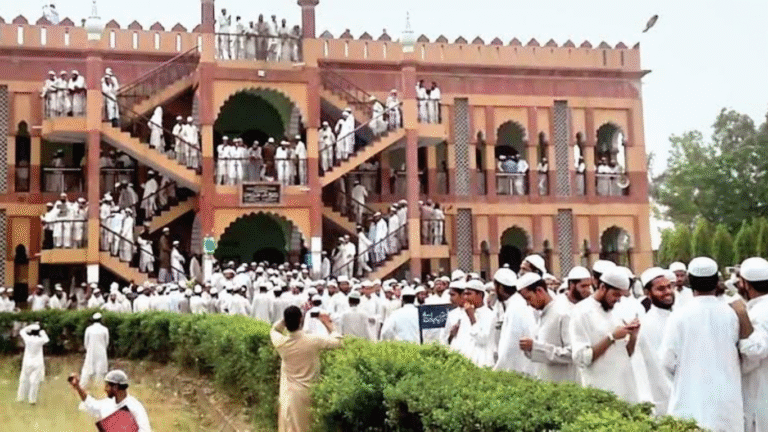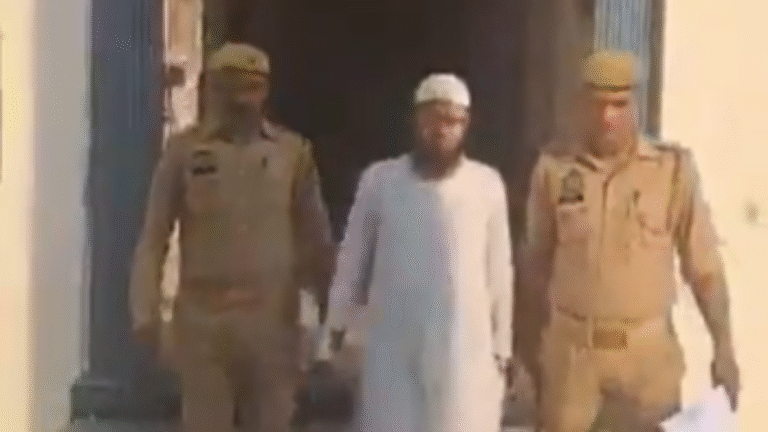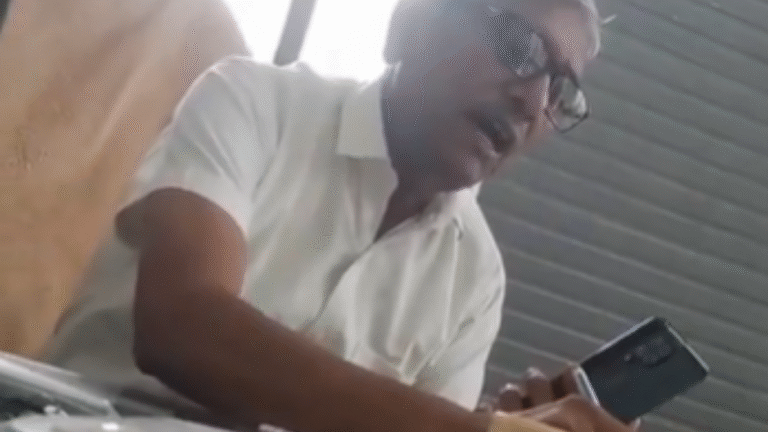
Nestled in the heart of Uttar Pradesh, Hardoi is a district that often remains in the shadows of bigger cities like Lucknow and Kanpur. But this region has its own charm, stories, and cultural richness. From its deep-rooted history to its lush geography, thriving agricultural economy, and vibrant local traditions, Hardoi is more than just a dot on the map. It’s a land where the past meets the present, and where simplicity tells the tale of a proud heritage.
Situated around 110 kilometers from Lucknow, Hardoi is well-connected by rail and road. The district is mostly rural but has seen developments in recent years. Whether you are a history lover, a nature enthusiast, or someone researching their roots, Hardoi holds something for everyone.
The History of Hardoi: A Glimpse into the Past
Hardoi’s history is filled with legends, revolutions, and tales of resilience. According to local beliefs, the name “Hardoi” may have originated from “Haridrohi,” a term used for a demon in Hindu mythology. Another view suggests it came from “Haridwar” as a sacred place, gradually turning into Hardoi over time. While there’s no single confirmed origin, the city’s deep cultural and religious ties can’t be ignored.
Historically, Hardoi has been a part of the Awadh region, which has witnessed several power transitions — from Hindu kings to Muslim sultanates, and later to British rule. During the Mughal era, the region was a key administrative area. Post-independence, Hardoi gained recognition as a separate district.
The district also played a notable role in the First War of Independence in 1857. Many local zamindars and commoners took part in the uprising against the British. Hardoi’s bravery and sacrifice during that time have been recorded in local oral histories and old documents.
Temples, old forts, and Mughal-era structures still stand in different parts of the district, silently telling stories of a rich past. This blend of mythology, bravery, and architectural history makes Hardoi a historically vibrant district of Uttar Pradesh.
Geography of Hardoi: Rivers, Soils, and Climate
The geography of Hardoi plays a major role in shaping its agricultural economy and lifestyle. The district lies between the Ganges and Gomti rivers, which bless the land with fertile alluvial soil. The presence of these rivers not only supports farming but also adds to the scenic beauty of the region.
The terrain is mostly flat, which is typical of the Gangetic plains. However, the soil type varies — from loam and sandy loam in the north to clayey and black soil in the southern parts. These soil types support the cultivation of a wide range of crops, making agriculture the backbone of the local economy.
The climate of Hardoi is humid subtropical, with hot summers, a monsoon season, and cold winters. Summers can be harsh, with temperatures crossing 40°C, while winters are relatively cool, sometimes dipping below 7°C. The monsoon season between June and September brings life to the fields and is eagerly awaited by farmers.
Rivers like Sai, Garra, and Ganga not only irrigate the lands but are also considered sacred by the locals. Many religious events and rituals are conducted on their banks, strengthening the spiritual connection with nature.
Economy of Hardoi: Agriculture at Its Core
Hardoi’s economy is largely rural and agriculture-based, employing more than 70% of its population. The fertile land and availability of irrigation make it suitable for a variety of crops.
The main crops include:
- Wheat
- Rice
- Pulses
- Sugarcane
- Mustard
Besides these, Hardoi is known for its mango orchards, especially in areas like Shahabad and Pihani. The local mangoes are not only consumed within the state but are also exported to other parts of India.
Animal husbandry, poultry, and dairy farming also contribute to the local economy. Many households rear buffaloes and cows, producing milk and dairy products that are sold in nearby towns.
In recent years, small-scale industries have begun to emerge in Hardoi. These include handloom, handicrafts, and agro-processing units. Government schemes have tried to promote rural employment through initiatives like the MGNREGA and PM-KISAN, although their impact varies across villages.
Weekly markets (haats), local fairs, and mandis act as the economic lifeline for the farmers and traders. The district is also seeing slow but steady growth in retail, transportation, and banking services, particularly in urban centers like Hardoi town, Sandila, Bilgram, and Shahabad.
Demographics of Hardoi: A Mix of Cultures
As per the latest available data, Hardoi has a population of around 4.5 million. The district has a majority Hindu population, with a significant Muslim minority. Other communities like Sikhs, Jains, and Christians are also present, especially in urban centers.
The district is linguistically rich. The main language spoken is Hindi, followed by Awadhi, a regional dialect. Urdu is also widely spoken in Muslim-dominated areas. English is limited to schools and government offices.
The literacy rate in Hardoi is below the national average but has been improving. Government and private schools have expanded their reach in rural areas. Still, challenges remain, especially in female literacy and higher education accessibility.
The social structure is a mix of castes and communities, with traditional occupations and cultural identities still playing an influential role. However, the younger generation is gradually moving toward education and skill-based employment.
Tourism in Hardoi: Places to Visit
Hardoi might not be on the top tourist maps, but it’s a hidden gem for those who love heritage, spirituality, and nature. Here are some of the key attractions:
1. Sandi Bird Sanctuary
Located near Bilgram, this sanctuary is a paradise for bird lovers. In winters, it attracts migratory birds from as far as Siberia. It’s a peaceful place to enjoy nature and photography.
2. Naimisharanya (Near Hardoi border)
Though technically located in Sitapur, this spiritual site is close enough to be part of Hardoi’s cultural circuit. It is believed to be the place where Ved Vyas composed the Mahabharata.
3. Bilgram Fort
A historical site reflecting Mughal and Awadh-era architecture. Though in ruins, the fort stands as a symbol of Hardoi’s glorious past.
4. Bawan Imli Tree
Located in Mallawan, this site is connected to the freedom movement. It is said that 52 revolutionaries were hanged here by the British. It is now a memorial site and a reminder of the sacrifice made for India’s independence.
5. Temples
Hardoi has several temples that are centuries old. Places like Kameshwar Nath Temple and Sankat Mochan Mandir are visited by both locals and tourists alike.
Politics and Governance in Hardoi
Hardoi is a politically active district and forms a crucial part of the Uttar Pradesh political landscape. It has one parliamentary constituency (Hardoi Lok Sabha seat) and several Vidhan Sabha seats, including Hardoi, Shahabad, Bilgram, Sandi, and others.
Major political parties active in the region are:
- Bharatiya Janata Party (BJP)
- Samajwadi Party (SP)
- Bahujan Samaj Party (BSP)
- Indian National Congress (INC)
Over the years, caste dynamics and agricultural issues have played a big role in elections. Farmers, youth unemployment, education, and basic amenities like roads and electricity are the key election issues.
Politically, Hardoi has seen both stability and upheaval. Leaders from the district have held important positions in the state assembly and contributed to policy-making. However, challenges like corruption, poor infrastructure, and law and order issues still affect governance.
Education, Health, and Infrastructure
Hardoi is still catching up when it comes to modern education and healthcare. While there are government and private schools in most towns and villages, higher education options are limited. Some of the notable institutions include:
- Hardoi Polytechnic
- Government Degree College, Hardoi
- Sardar Patel Institute of Management
Healthcare facilities are also a work in progress. The District Hospital in Hardoi town is the main referral center, but smaller CHCs and PHCs are scattered across the region. Lack of specialists and modern equipment is still a concern, especially in rural areas.
The road network is steadily improving. Major highways connect Hardoi to Lucknow, Sitapur, Shahjahanpur, and Kanpur. The Hardoi Railway Station is an important junction on the Lucknow-Moradabad line.
Mobile connectivity and internet penetration have improved post-2020. Many youths now use smartphones and access digital learning, banking, and job portals. However, electricity supply remains inconsistent in certain areas, particularly in summer.
Festivals and Culture: The Heart of Hardoi
Hardoi is a district that celebrates every festival with equal enthusiasm — be it Holi, Diwali, Eid, Muharram, or Dussehra. Rural areas see vibrant folk traditions like bhajan sandhyas, kavi sammelans, and nautankis. Local fairs (melas) are organized around religious occasions and harvest festivals.
Weddings, religious functions, and even political events are accompanied by folk music, drum beats, and traditional dance. The cuisine is typical Awadhi — full of flavors, spices, and sweets. Popular dishes include kachori-sabzi, puri-halwa, and tehri (spiced rice).
Handicrafts, pottery, and weaving are still practiced in pockets of the district. Many households pass down these skills through generations, especially in villages around Sandila and Pihani.
Conclusion: Why Hardoi Deserves Your Attention
Hardoi is not just a district on the map — it’s a living, breathing canvas of Uttar Pradesh’s heritage. From historical monuments and rich agricultural land to spiritual centers and growing educational institutions, Hardoi is moving ahead while keeping its traditions intact.
Yes, it has challenges — in healthcare, literacy, and infrastructure — but it also has potential. With more attention from the government, better use of its youth population, and a push for eco-tourism and local industries, Hardoi can rise as a model district shortly.
So, whether you’re planning a visit, doing research, or looking to understand real rural India — Hardoi is where you’ll find both authenticity and promise.



